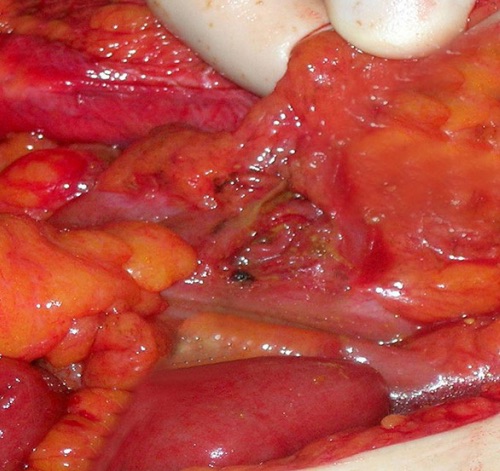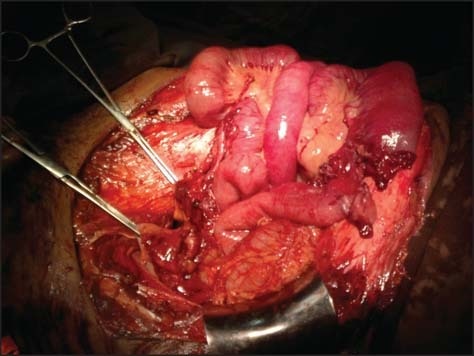Colon Trauma
Colon Trauma
David Ray Velez, MD
Table of Contents
Background
Etiology
- The Second Most Commonly Injured Organ (40%) After Penetrating Abdominal Trauma
- Behind Small Bowel
- Less Common After Blunt Abdominal Trauma
- Blunt Injuries are Most Often Near Sites of Attachment (Ligament of Treitz, Ileocecal Valve, or Adhesions)
Mechanism of Injury
- Penetrating Mechanisms:
- Direct Injury – Tearing & Crushing Force Through Tissue Along the Trajectory of the Projectile & its Fragments
- Gunshot Wounds Have an Additional Dissipation of Kinetic Energy That Causes Further Damage
- Cavitation – As a High Energy Projectile Moves Through Tissue Energy Causes a Radial Stretching, Forming a Temporary Cavity with Additional Tissue Damage
- Higher Energy Projectiles Create Larger Cavities & Cause More Damage
- Shock Wave – The Projectile Creates Rapid Changes in Pressure & Temperature that Propagate Through Tissue Causing Additional Injury
- Direct Injury – Tearing & Crushing Force Through Tissue Along the Trajectory of the Projectile & its Fragments
- Blunt Mechanisms:
- Crushing Force – Direct Compression Causing Injury
- Shearing Force – Tearing from Acceleration/Deceleration Around Fixed Attachments
- Bursting Force – Force Causing Acutely Increased Intraluminal Pressure within Hollow Organs Leading to Rupture

Colon Perforation 1
Presentation and Diagnosis
Presentation
- Mostly Nonspecific
- Abdominal Pain
- Nausea and Vomiting
- Hematochezia or Blood per Rectum (Digital Rectal Exam/DRE)
May Be Diagnosed Intraoperatively or on CT – Consider CT with IV and Rectal Contrast if Appropriate
AAST Colon Injury Grade
- *See AAST
- Injury Scale is Under Copyright
Treatment
Free Fluid on CT without Solid Organ Injury Should Raise Immediate Concern for Hollow Viscus Injury – Does Not Absolutely Mandate Surgical Exploration but Should At Least Be Monitored Closely with Serial Examinations if Not Operating
Paracolonic Hematoma: Generally Managed Conservatively (Explore if Large or Expanding)
Definition of “Destructive” Bowel Injury
- Laceration > 50% Circumference or Transection
- Devascularized or “Bucket Handle” Injury
Non-Destructive Injury (Grade I-II): Primary Repair
- Close Transversely to Avoid Stricture if Able
- Close in One or Two-Layers – No Difference in Complication Rates
- May Convert Two Perforations Closely Opposed into a Single Defect
- Consider Resection if There are Multiple Small Perforations in a Short Segment
Destructive Injury (Grade III-V): Segmental Resection (Partial Colectomy)
- Anastomosis Can Be Handsewn or Stapled – No Difference in Complication Rates
- Close the Mesenteric Defect to Prevent Internal Hernia
Diversion (Ostomy) Indications
- Significant Blood Transfusion (> 4-6 Units)
- Shock on Vasopressor Support
- *Fecal Contamination Alone is Associated with Increased Risk of Abscess but Not Anastomotic Failure and Should Not Be Used as an Indication for Colostomy (Nor is Location or Associated Abdominal Injuries)

Sigmoid Transection and Jejunum Transection 2
References
- Ertugrul G, Coskun M, Sevinc M, Ertugrul F, Toydemir T. Delayed presentation of a sigmoid colon injury following blunt abdominal trauma: a case report. J Med Case Rep. 2012 Aug 20;6:247. (License: CC BY-2.0)
- Bansal S, Jain S, Meena LN. Staged management of giant traumatic abdominal wall defect: A rare case report. Burns Trauma. 2013 Dec 18;1(3):144-7. (License: CC BY-4.0)
